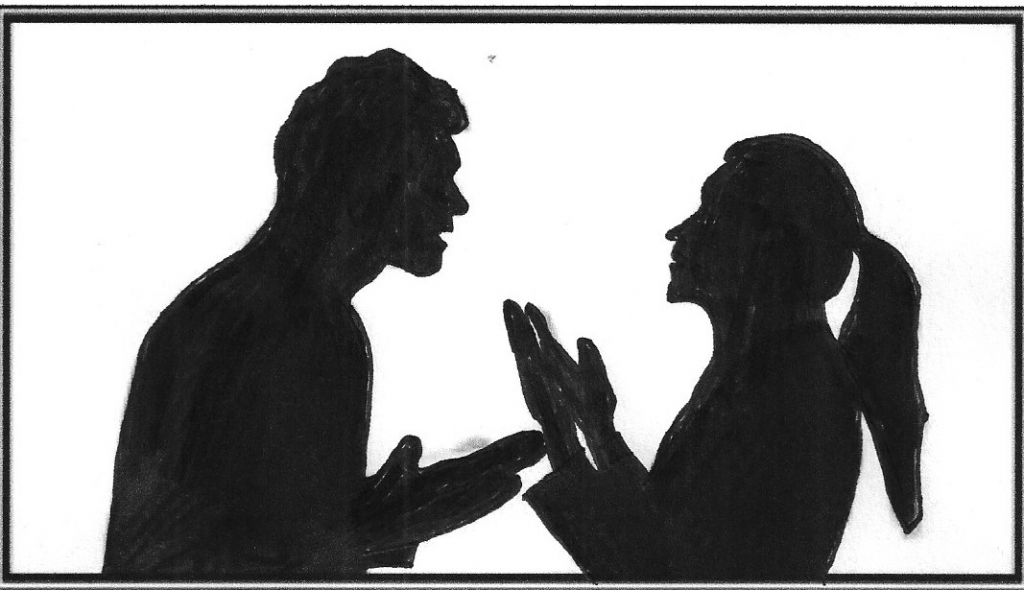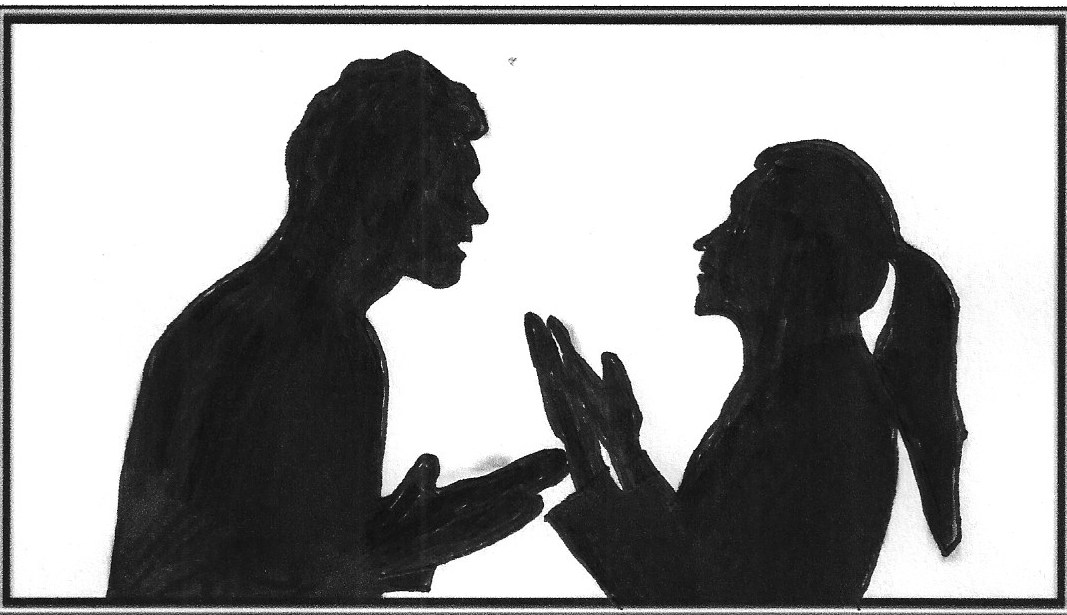
By embracing conflict as a part of life, you can make the most of each situation, using it as a learning opportunity to transform your relationship into something better.
How do you typically respond when you seriously disagree with your partner? Do you…
- get mad inside but keep quiet and give the other the “silent” treatment?
- withdraw to a safe distance because you don’t like to argue?
- get angry, criticize, call names, use sarcasm or some other aggressive behavior?
- give in; say “I guess you are right” with a big sigh, be submissive in order to avoid conflict.
- deny or pretend that “everything is okay”–no conflict exists.
Conflict Styles
In a dispute, it’s often easier to describe how others respond then to how we respond. Each of us has a predominant conflict style that we use to meet our own needs. By examining conflict styles and the consequences of those behaviors, we can gain a better understanding of the impact that our personal conflict style has on the other. With a better understanding, you then can make a conscious choice on how to respond in a conflict situation to help reduce stress and increase positive behaviors that will improve the relationship.
Behavioral scientists Kenneth Thomas and Ralph Kilmann, who developed the Thomas-Kilmann Conflict Mode Instrument, have identified five styles to responding to conflict—competition, collaboration, compromise, avoidance, and accommodation. No conflict style is inherently right or wrong, but one or more styles could be inappropriate for a given situation and the impact could result in a situation quickly spiraling out of control.
1. Competing
Value of own issue/goal: High
Value of relationship: Low
Goal: I win, you lose
People who consistently use a competitive style come across as aggressive, autocratic, confrontational, and intimidating. A competitive style is an attempt to gain power and pressure a change at the other person’s expense. A competitive style of managing conflict can be appropriate when you have to implement an unpopular decision, make a quick decision, the decision is vital in a crisis, or it is important to let others know how important an issue is to you – “standing up for your right.” The biggest disadvantage of using this style is that relationships can be harmed beyond repair and may encourage other parties to use covert methods to get their needs met because conflict with these people are reduced to – “if you are not with me, you are against me.”
2. Accommodating
Value of own issue/goal: Low
Value relationship: High
Goal: I lose, you win
By accommodating you set aside your own personal needs because you want to please others in order to keep the peace. The emphasis is on preserving the relationship. Smoothing or harmonizing can result in a false solution to a problem and can create feelings in a person that range from anger to pleasure. Accommodators are unassertive and cooperative and may play the role of a martyr, complainer, or saboteur. However, accommodation can be useful when one is wrong or when you want to minimize losses when you are going to lose anyway because it preserves relationships. If you use it all the time it can become competitive – “I am nicer than you are” – and may result in reduced creativity in conflict situations and increased power imbalances.
3. Avoiding
Value of own issue/goal: Low
Value of relationship: Low
Goal: I lose, you lose
Avoidance is characterized by deliberately ignoring or withdrawing from a conflict rather than facing it. This style may be perceived as not caring about your own issue or the issues of others. People who avoid the situation hope the problem will go away, resolve itself without their involvement, or think that others are ready to take the responsibility. There are situations where avoidance is appropriate such as when you need more time to think of how to respond, time constraints demand a delay, confrontation will hurt a working relationship, or there is little chance of satisfying your needs. However, avoidance can be destructive if the other person perceives that you don’t care enough to engage. By not dealing with the conflict, this style allows the conflict to simmer and heat up unnecessarily, resulting in anger or a negative outburst.
4. Compromising
Value of own issue/goal: Medium
Value of relationship: Medium
Goal: I win some, you win some
The compromising style demonstrates that you are willing to sacrifice some of your goals while persuading others to give up part of theirs – give a little, get a little. Compromising maintains the relationship and can take less time than collaboration and resolutions might mean splitting the difference or seeking a middle ground position. The downside to compromising is that it can be an easy way out and reduces new creative options. If you constantly split the difference or “straddle the fence,” game playing can result and the outcome could be less than ideal.
5. Collaborating
Value of own issue/goal: High
Value of relationship: High
Goal: I win, you win
The collaborative style views conflicts as problems to be solved and finding creative solutions that satisfy all the parties’ concerns. You don’t give up your self interest; you dig into the issue to identify the underlying concerns, test your own assumptions, and understand the views of others. Collaboration takes time and if the relationship among the parties is not important, then it may not be worth the time and energy to create a win-win solution. However, collaboration fosters respect, trust, and builds relationships. To make an environment more collaborative, address the conflict directly and in a way that expresses willingness for all parties to get what they need.
Although all of the approaches have their time and place, you need to ask yourself the basic question, “Is my preferred conflict handling style the very best I can use to resolve this conflict or solve this problem?”
Problem solving on your interests and the other person’s interests leads to more creative and successful resolutions because you meet not only your need but theirs as well.
Source: Fisher, Ury, and Patton, Getting to Yes, 1991
Houston Couples Counseling –
 Hi, I am Lind Butler a Marriage and Family Therapist in Houston. If you are are experiencing conflict in your relationship, I would be happy to help you to better understand your “conflict styles” and gain some tools for new ways of dealing with repetitive conflict patterns and disagreements.
Hi, I am Lind Butler a Marriage and Family Therapist in Houston. If you are are experiencing conflict in your relationship, I would be happy to help you to better understand your “conflict styles” and gain some tools for new ways of dealing with repetitive conflict patterns and disagreements.

